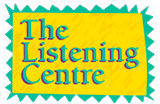Jane Clark's Story
A slip and fall on ice three years ago left Jane with a collection of sensory, cognitive and physical persistent post-concussion symptoms that will be familiar to many readers of this newsletter. It ultimately ended her career as a top ranked IP litigation lawyer with prestigious national and international rankings including Best Lawyers in Canada, Who’s Who Legal, IAM 1000 (World’s Leading Patent Practitioners), and LMG Life Sciences Stars.
“It is a tough recovery road” she says. “One of my first surprises was that ‘auto- pilot mode’ had been erased. Seemingly routine activities were now a jumble of components and steps requiring exhausting focus to assemble and undertake in the proper order. I was young and old at the same time: relearning basic skills like a newborn while sharing traits of advanced age. Ordinary environments presented as excruciating conditioning exercises overloaded with noise, movement and speed. My life was undergoing major unwelcome shifts on all fronts yet no one knew it, physicians and myself included. We all expected a full recovery. Uncertainty is simply part of the concussion package including, on timing, treatment, priority of treatments, and outcome”.
Barriers to find, fund, wait for and coordinate appropriate care were another surprise. Fifteen months post injury, she was seen at the Acquired Brain Injury clinic (TOH’s Rehab Centre) run by Dr. Marshall, lead author on practice guidelines for persisting symptoms. Jane notes, “The practice guidelines suggest referral to a specialized centre if symptoms persist at three months. Patients then face a further wait time of 9-12 months. This is essentially a denial of care at the most critical time made more abysmal given the spotty concussion expertise elsewhere. That said, I will be forever grateful for the sophisticated expertise, excellent care and innovative guidance that I found there”.
Determined to advance her recovery, Jane has engaged in conventional and cutting-edge treatments alike. Familiar with research frontiers after 25 years as patent counsel, she recognizes the patterns in concussion treatment. “Controversies abound. Experts pursue, study, debate and rebuff various theories and therapies. Eventually answers will emerge that explain all the pieces, likely to be led by individuals or groups prepared to move in unobvious directions. In the meantime, on the front lines living it, I take chances on new options. Otherwise, plateaus at the end of conventional treatments become ceilings rather than stepping stones. If a therapy improves function, for whatever reason, that’s a win.”
Success came recently with a filtered music therapy under the care of Paul Madaule (The Listening Centre, Toronto). Dr. Norman Doidge described Paul’s work helping autistic children fix their “auditory zoom” in his book The Brain’s Way of Healing, 2015. Beset by a debilitating auditory processing disorder post-injury, Jane identified with the children running from a noisy room, hands clamped over their ears and convinced Paul to try it on her. “I had no filters. Sounds jammed equally together into a disturbing indecipherable mess causing nausea, dizziness, startles and usually gagging. Continued exposure turned me into a ‘pumpkin’, a ‘squash head’. Like Cinderella’s coach, ‘poof’, my brain was mush, literally out of gas with no one home, and often required days of recovery”, elaborated Jane. Despite assessments by ENT’s and audiologists, and conditioning exercises for the last two years, progress on this issue was limited, with few treatment options. She was thrilled when the sounds began “to stay outside” by the 5th day of music therapy. While significant auditory hurdles remain, “this was a leap, shattering what seemed like a concrete wall. I am mainly back from the exile of a separate room at family events. My young nieces and nephews and I are becoming reacquainted. I can participate in more things directly rather than vicariously”. She also continues to see TOH audiologist Jennifer Platt-Talbot on other auditory issues and is one year into a tinnitus retraining therapy (hyperacusis) trial.
Excerpt from the Newsletter of the Brain Injury Association of the Ottawa Valley (BIAOV), March 2016, pp 8-9.
 Skip Navigation
Skip Navigation